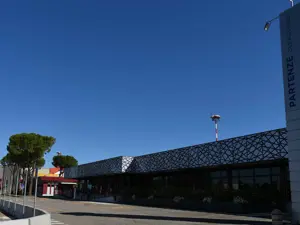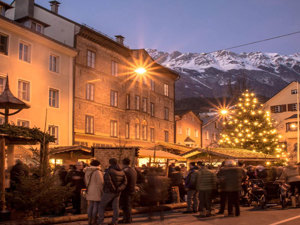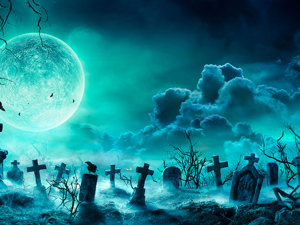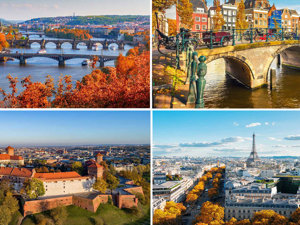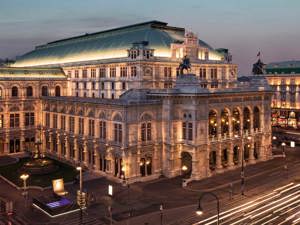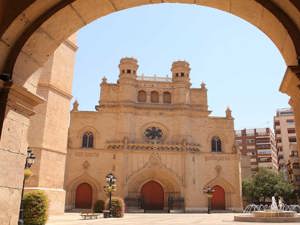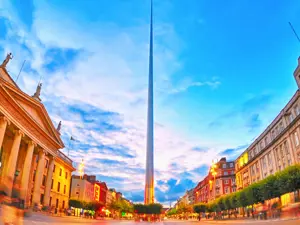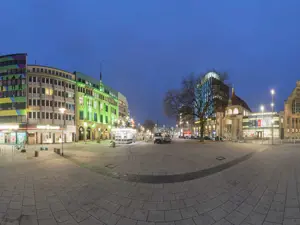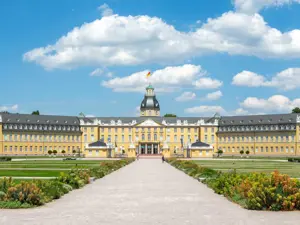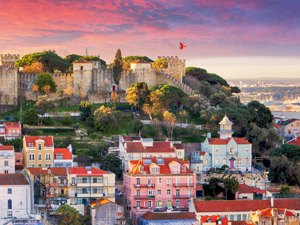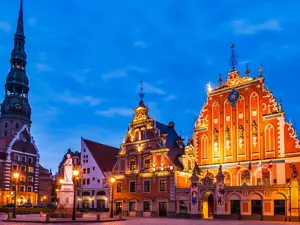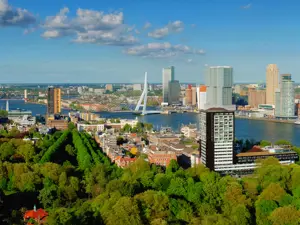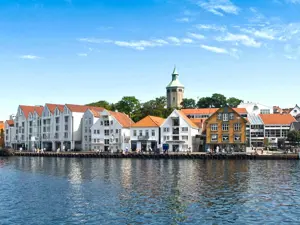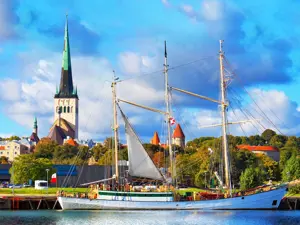World capital of music from the imperial past
It is impossible not to associate Vienna, the elegant capital of Austria situated on the banks of the River Danube, with concerts, balls, evenings at the Opera or music festivals. The city is steeped in the history of eternal music created by composers who were born or lived here, such as Mozart, Schubert, Strauss, Beethoven and Mahler. The city’s era of greatest splendour was in the eighteenth century when it was under the rule of Maria Theresa of Habsburg, the enlightened empress, but this splendour still continues today with numerous festivals and musical performances, and especially the famous New Year's Eve Concert performed by the Vienna Philharmonic orchestra. This concert is broadcast worldwide on the morning of every 1st January and tickets for the event are in such high demand that they must be booked a year in advance.
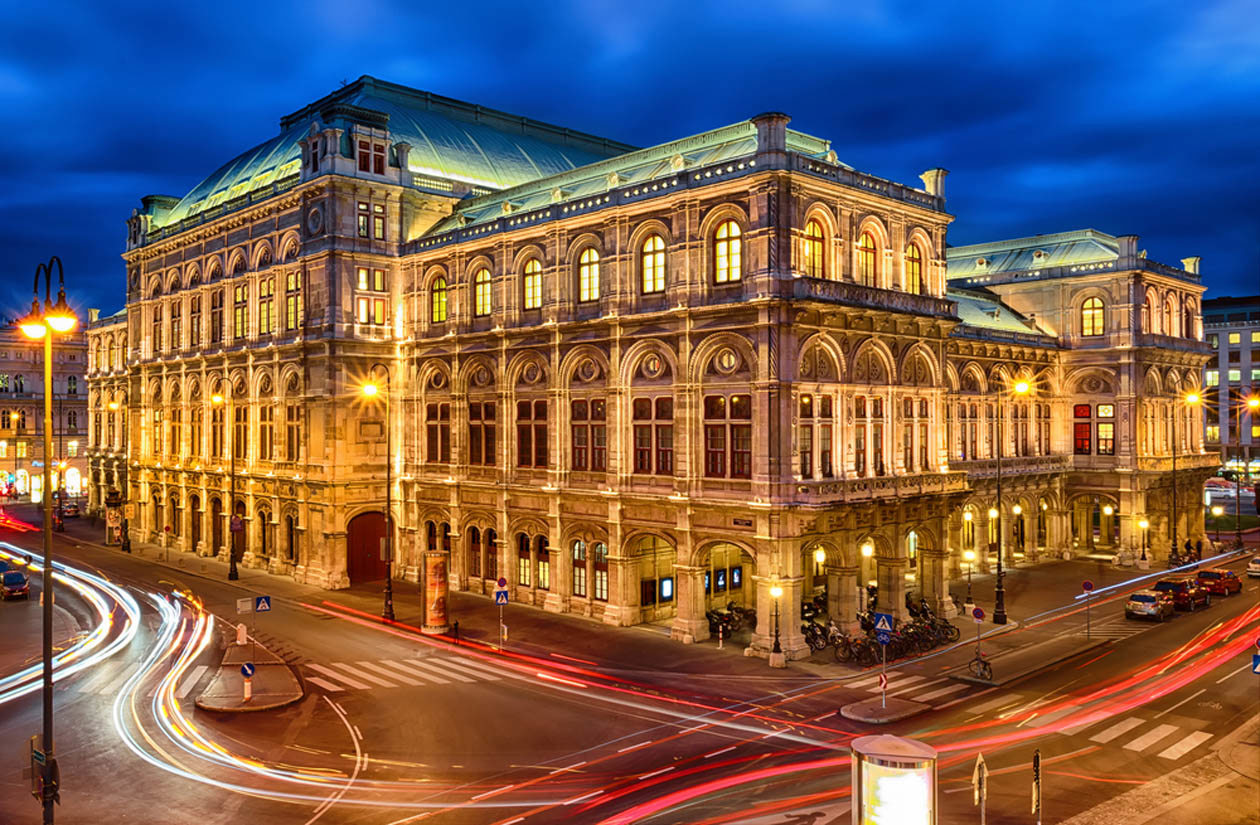
The Opera House. Photo: © Sisterscom.com, Shutterstock
Vienna will again appear in the many guises that make a wonderful city to explore. Whether by bus, tram or sailing on the Danube, and above all on foot, a visit to the city involves a never-ending series of beautiful sights.
Imperial House of the Habsburgs
Long dominated by the Imperial House of the Habsburgs, everything in Vienna is on grand scale, including the sumptuous palaces – a shining example being the immense complex of the Hofburg which is made up of some ten buildings and was the official Imperial residence and seat of government for over six centuries –, the City Hall, the monumental churches (including St. Stephen’s Cathedral, one of the most beautiful Gothic churches in Europe) and the vast and welcoming Opera Theatre.
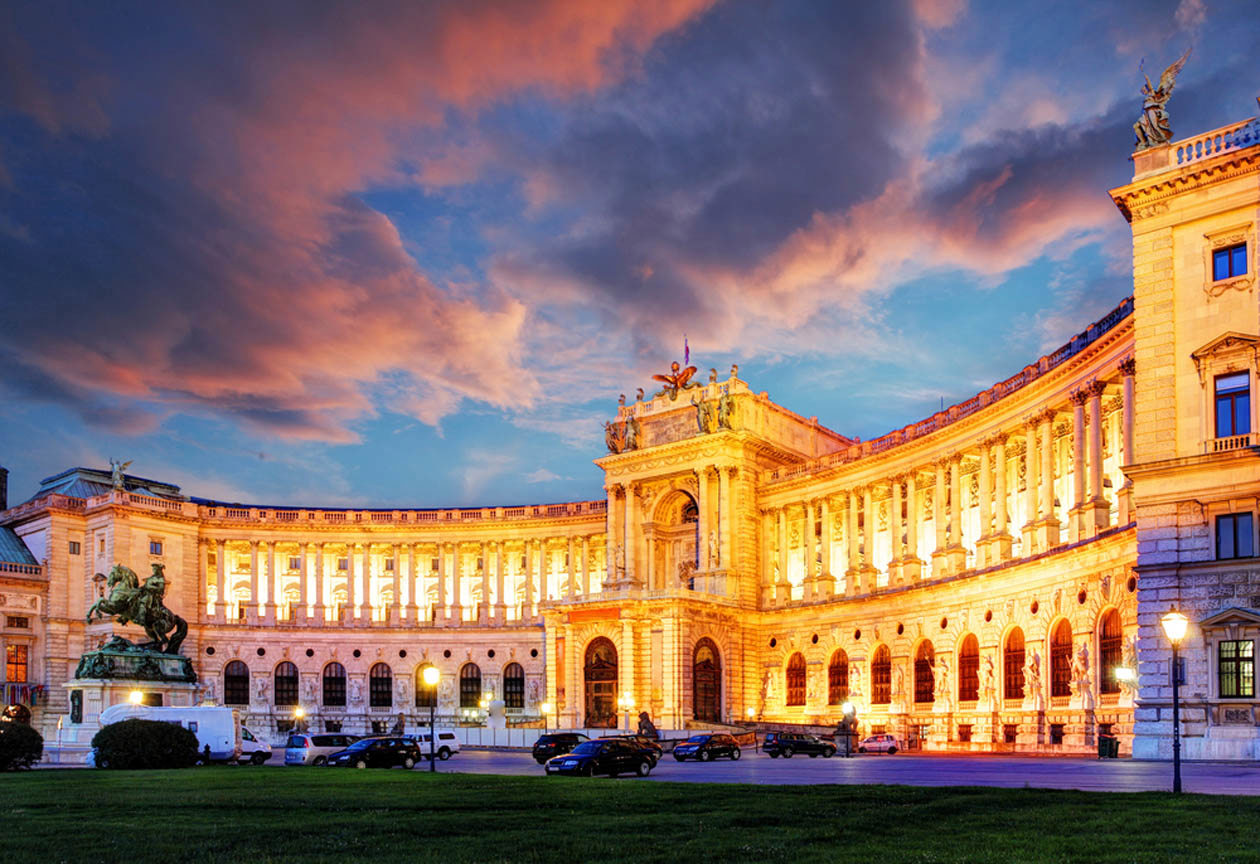
Hofburg. Photo: © Sisterscom.com, Shutterstock
Due to its fortunate geographical position, close to central Europe as well as the countries of the East, Vienna can be considered one of the most cosmopolitan cities on the continent. Catching the eye of visitors is its architecture, which combines German Gothic elements with Middle Eastern influences, Italian grace with French classicism and Baroque style. Vienna, like few other cities in the world, is still steeped in a magnificent, almost dream-like atmosphere of bygone times, with streets of great elegance and numerous cosy coffee bars where you can enjoy truly delicious local treats and where the nineteenth-century custom of reading newspapers 'on the cane' still continues today.
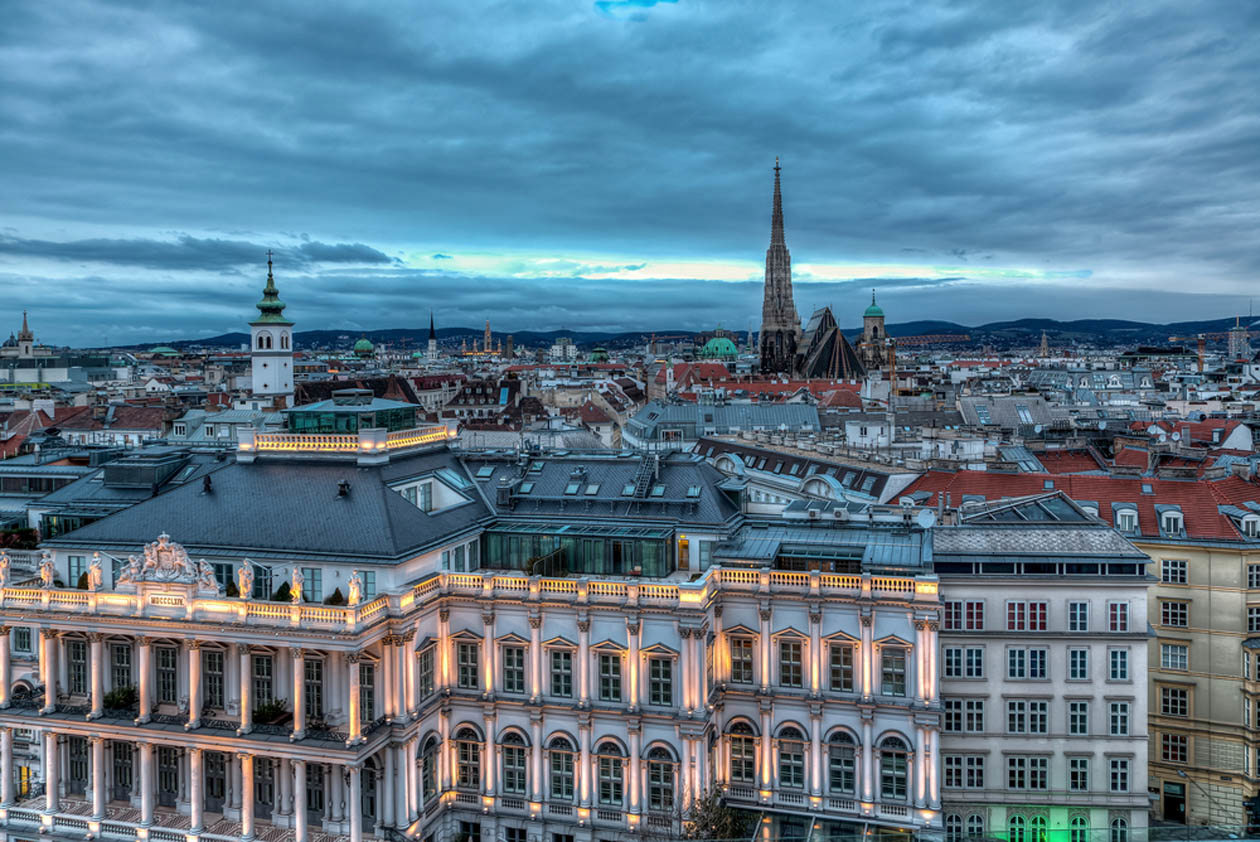
Vienna Photo: © Sisterscom.com, Shutterstock
The historic centre of Vienna is a world heritage site. Also the world capital of music, it offers both history and imperial splendour.
The palaces and castles in Vienna
The exquisite Baroque castles of Schönbrunn and Belvedere, and the Imperial Hofburg Palace with their rooms and furnishigs they repesent a dive into the imperial past of the city.
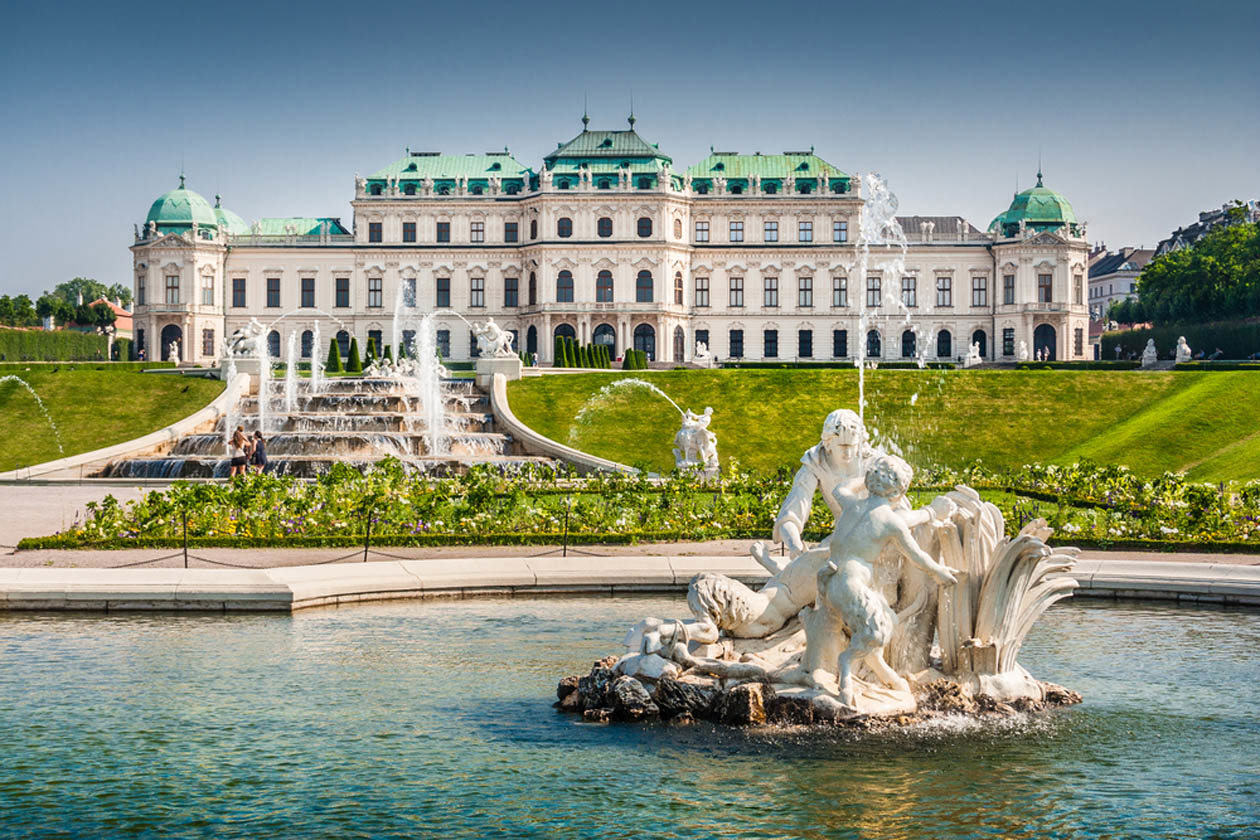
Belvedere palace. Photo: © Sisterscom.com, Shutterstock
Are not-to-be-missed stops in a tour tracing the history of the old Hapsburg monarchy it's the Princess Sissi Museum as is a walk along the splendid Ringstrasse and a visit to St. Stephen’s Cathedral.
A walk on the Ringstrasse
A ring road of more than five kilometres long that surrounds the city centre (a scenic avenue built by Emperor Franz Joseph, which was inaugurated in 1865 after the ancient walls were demolished) reveals the city’s great Habsburg past. Today Ringstrasse is considered one of the world’s most beautiful avenues; it is lined with many representative buildings such as the new neo-gothic City Hall, the Renaissance-style University, the Vienna Stock Exchange and other sumptuous mansions of past celebrities.
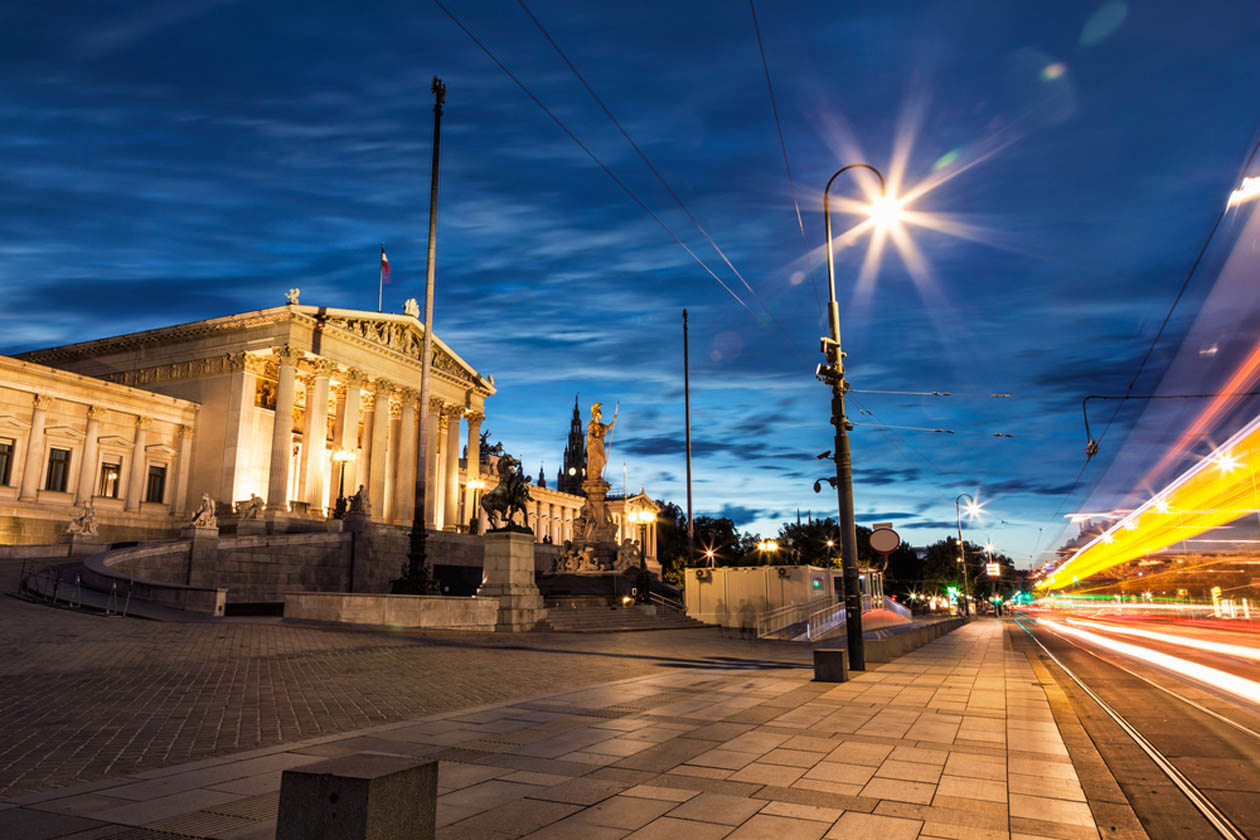
Ringstrasse. Photo: © Sisterscom.com, Shutterstock
The avenue, in some areas, 'opens' out into vast green spaces. The city has many parks and gardens: Prater, for example, is a park of enormous proportions. It has been the city’s most popular place for recreation and entertainment since Joseph II donated it to the people in 1766, having previously been a hunting ground of the Habsburgs. One of the city’s most famous symbols, the Ferris wheel, is found in the park and offers a breathtaking view of Vienna and the River Danube.

Vienna Photo: © Sisterscom.com, Shutterstock
From the imperial palaces to the artistic masterpieces of the Albertina, from the atmosphere of the typical Viennese Schwarzenberg Café to the Prater Ferris Wheel, Vienna charms with its extraordinary variety of attractions.
Schönbrunn Palace
You can’t take a trip to Vienna without visiting Schönbrunn Palace (which means beautiful spring) on the outskirts of the city, which was built as the summer residence of the imperial family by Maria Theresa so that her sixteen children could enjoy a place away from the strict regime of the Court of Vienna and be closer to nature.

Schönbrunn. Photo: © Sisterscom.com, Shutterstock
The parks in Vienna
The Prater, a large expanse of green in the heart of the city, is a great place to take a walk or a ride of 4 km on the Liliputbahn train. From a height of 65 metres the famous Ferris wheel offers an extraordinary panoramic view.
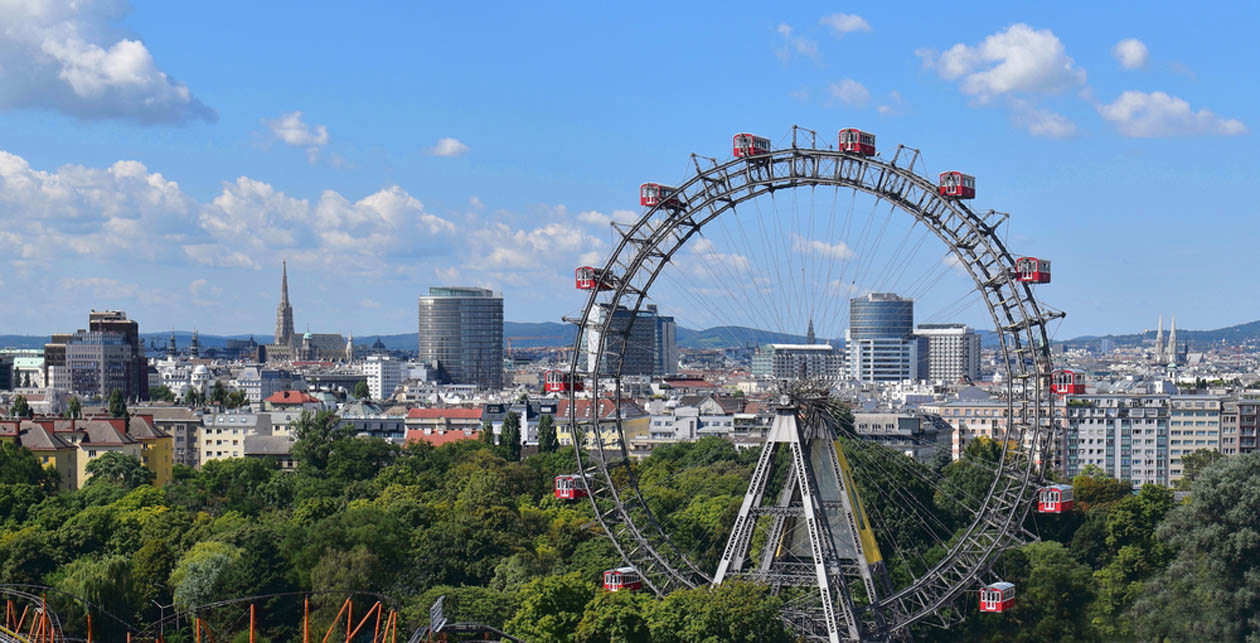
Prater. Photo: © Sisterscom.com, Shutterstock
Music enthusiasts can enjoy itineraries that explore the life and works of Wolfgang Amadeus Mozart and Johann Strauss. Don’t miss also a trip on the Danube on board the boat Vindobona.
The museums in Vienna
And art lovers can experiences tours of Viennese Art Nouveau or a tour of the Albertina Museum with its famous collection of graphic art (more than a million prints and 60,000 drawings).
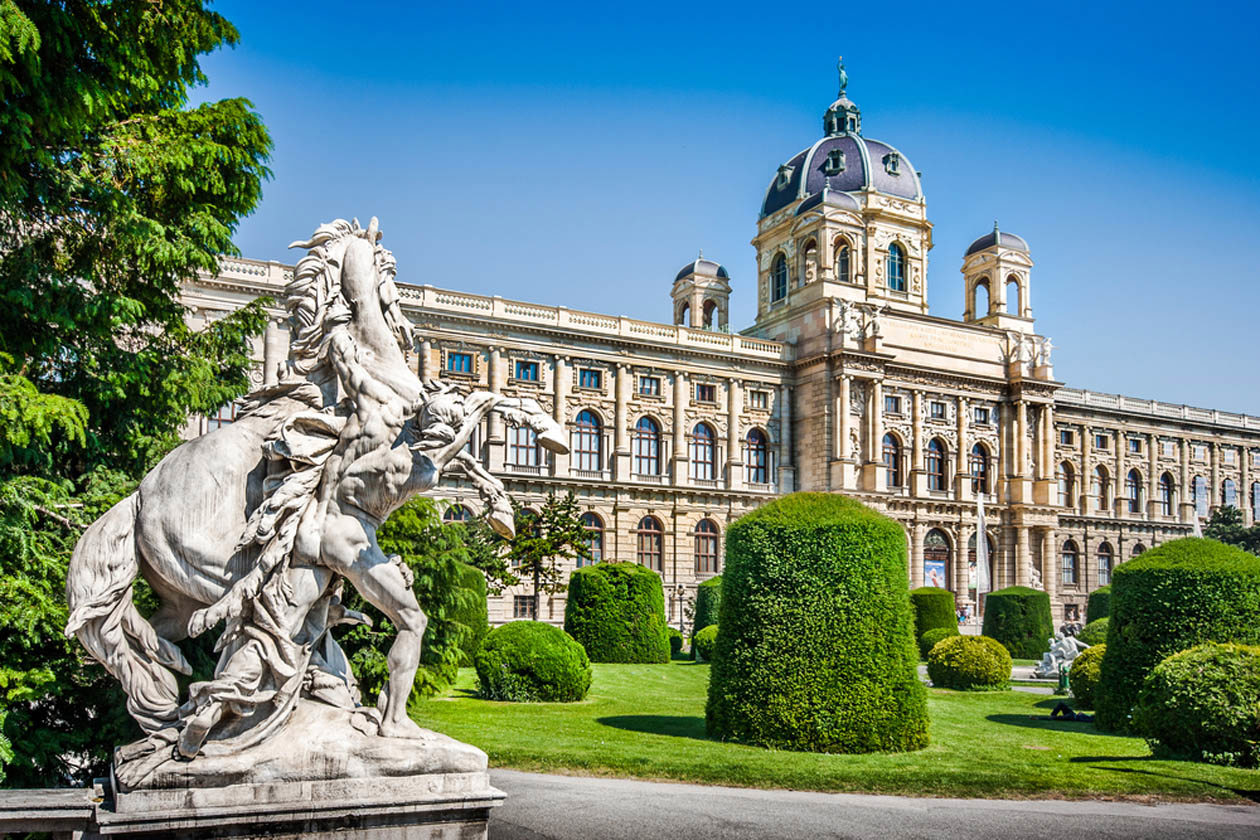
Historical museum. Photo: © Sisterscom.com, Shutterstock
And if in Vienna you want to try a unique experience, book a horse-drawn carriage, known as a ‘Fiaker’, to visit the sights, stopping at some of the famous coffee houses, which almost always offer music and excellent coffee (because coffee drinking, it should be remembered, started in Vienna), including many kinds of specialty coffee, as well as some of the most famous sweets in the world, such as Sacher torte. But, don’t forget the fine local wines produced by the large wine estates around the city, including the notable 'Gemischter Satz', which roughly translated means ‘mixed blend’, which is produced with grapes from different vineyards.
Local products of Vienna
But in Vienna there is also the possibility of entering into the secrets of production of the chocolate, wine, beer, apple strudel or a famous Sacher cake.
To delight in the visit of the city you just have to stop in the many bars, restaurants, taverns or pastry shops to taste delicious sweets.
Text by Anna Glik
Avion Tourism Magazine
Photo: © Sisterscom.com, Shutterstock
Copyright © Sisterscom.com
Video: www.wien.info; www.slash.co.at
Tourism Board
www.wien.info
Partnership with Booking.com
Where to sleep in Vienna
VIenna Photo: © Sisterscom.com, Shutterstock
Vienna is a welcoming city and offers different possibilities for accommodation.
To find the ideal hotel and the best offers you can do a search for the stars but also for districts or landmarks.
DISTRICTS
Hotels in the districts
LANDMARKS
Hotels in tourist areas
AIRPORT
Hotels near the airport
WHERE TO GO IN VIENNA
Monuments in Vienna

Photo: © Sisterscom.com, Shutterstock
St. Stephen’s Cathedral
The Cathedral, dedicated to St. Stephen, is one of the city’s landmarks; inside it reveals its entire history, linked to the imperial family: here emperors were crowned, they married and baptised their children. Mozart was also married in this sumptuous Cathedral, which has many splendid altars along the nave. The Cathedral Treasury is situated nearby and houses valuable sculptures, manuscripts and masterpieces of Viennese gold-making traditions.

Photo: © Sisterscom.com, Shutterstock
St. Charles Church (Karlskirche)
St. Charles Church was built in 1713 by Charles VI to honour the vow made after the ending of the last plague epidemic in Vienna. It is an imposing baroque church, the most beautiful in the city of this style, with twin columns at the entrance on which scenes are carved from the life of St. Charles to whom it is dedicated.
Hofburg - Imperial residence
This former imperial residence in the centre of Vienna is steeped in history and culture and houses various museums.
The imperial apartments, inhabited over the centuries by members of the monarchy, feature sumptuous furnishings that date back to different eras and are of various styles: Baroque, Rococo, Empire, etc ...
The Sissi Museum, in the imperial apartments, exhibits portraits of the empress, many of her dresses, hundreds of shoes, her hand-written poems, and descriptions of her beauty preparations and exercise regimes.

Photo: © Sisterscom.com, Shutterstock
Museums in Vienna

Photo: © Sisterscom.com, Shutterstock
Albertina
The Albertina Museum is located in the largest Habsburg residential palace which towers over the walls of one of the last bastions of Vienna to the south of the Hofburg. The Albertina houses the most important works of graphic art in the world and masterpieces by well-known artists such as Monet, Degas, Renoir, Klimt, Picasso, Chagall, Malewitsch, Rothko and Baselitz. It owes its name to Duke Albert of Saxony Teschen who, in 1776, started a graphic arts collection, never imagining that the Museum would later have one million prints and 60,000 drawings.

Photo: © Sisterscom.com, Shutterstock
Leopold Museum
The Leopold Museum is found within the MuseumsQuartier, close to the Hofburg Imperial Residence, and exhibits masterpieces of Austrian modern art collected by Rudolf Leopold, a passionate art expert. The museum houses the Egon Schiele collection as well as masterpieces by Gustav Klimt and works of the Wiener Werkstätte by Josef Hoffmann and Koloman Moser. The architecture of the cube-shaped museum is modern; it overlooks the historic centre of Vienna, in Maria Theresien-Platz, and the Imperial Palace, while the terrace offers a view of the MuseumsQuartier.

Photo: © Sisterscom.com, Shutterstock
Belvedere Museum
The Belvedere is a baroque castle that houses an important museum. The complex consists of two castles: the Upper Belvedere and the Lower Belvedere. The Upper Belvedere has the largest collection of Gustav Klimt in the world. Art lovers should not miss seeing the famous ‘The Kiss’ by Klimt, but also works by Schiele and Kokoschka. The baroque garden of the Lower Belvedere is also open to the public.
Tour and Excursions in Vienna and its surroundings

Photo: © Sisterscom.com, Shutterstock
Schönbrunn Castle
The former summer residence of the imperial Habsburg family is a baroque building with 1,441 rooms and 149 kitchens. At the behest of Maria Theresa, the furniture, carpets and tapestries inside were crafted in the gentile Rococo style. The breakfast room is decorated in white boiserie with floral decorations made by herself and her daughters. The exotic style, loved by Maria Theresa, emanates from the round Chinese cabinet, the Millions Room, which is filled with Persian miniatures, and the Blue Chinese Salon. Inside the Palace visitors can tour the Children’s Museum and the Imperial Carriage Museum, admire the Gloriette, a colonnade of arcades, and the Orangery, which has plants and scenic fountains. The Castle is a UNESCO World Heritage site.

Photo: © Sisterscom.com, Shutterstock
Schloss Hof and Niederweiden Castle
In the region of Marchfeld, in Lower Austria, is Schloss Hof, the imperial country residence of Prince Eugene of Savoy and Maria Theresa of Austria. Here you can visit the imperial quarters and a baroque garden with fountains and statues.
The Castle of Niederweiden is located two kilometers from Schloss Hof. This baroque castle was built in 1693 by Johann Bernhard Fischer von Erlach and, in 1726, was bought by Prince Eugene of Savoy as a place for his hunting trips.
Partnership with GetYourGuide
Discover all tours
News & Useful info
Shopping
You might be interested in
Other destinations
Airports nearby Vienna




